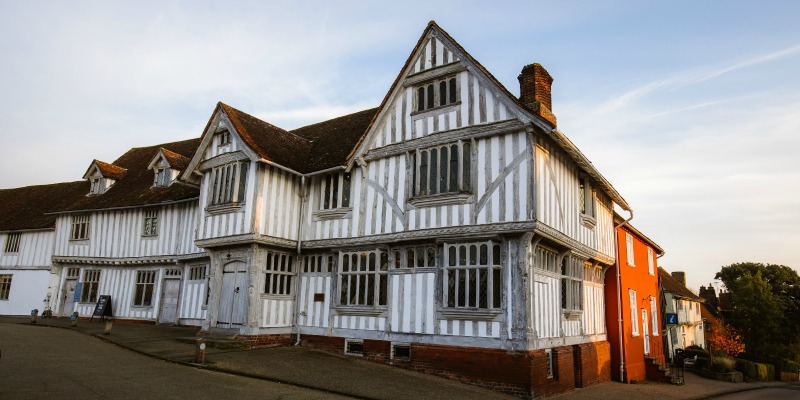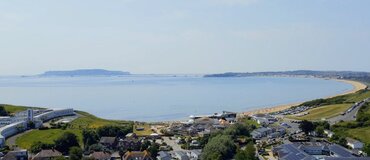
Suffolk is a fascinating place rich in mystery and home to Lavenham, England’s best-preserved Medieval village, featured in the film Harry Potter and the Deathly Hallows.
Here are just three of Suffolk's best kept secrets.
1. Lavenham, England’s best-preserved Medieval village
Lavenham is a quintessentially English village in Sudbury dotted with intriguing hidden carvings whispering of myths and legends. Over 300 of Lavenham’s Tudor timber-framed buildings have historic significance, the best example of which being Lavenham Guildhall in the market square. Built around 1530, it is thought to be one of the most impressive Medieval timber-framed buildings still standing in England.
The equally impressive De Vere House is the 14th century double-fronted cottage that was used as the birthplace of the popular fictional character, Harry Potter in the film Harry Potter and the Deathly Hallows. The house still has original period fireplaces, a rare stone spiral staircase with a carved brick handrail and wall paintings.
Harry Potter fans and history-lovers alike will enjoy the National Trust history tour walk around Lavenham’s crooked houses.
2. Orford Castle and the Wild Man of Orford
The historic coastal town of Orford is home to Orford Castle and the mysterious tale of the Wild Man of Orford.
According to folklore, in 1167, the local fishermen of Orford were shocked as they reeled in their nets one day to discover what was at first thought to be a merman from the sea. The naked, disorientated man had a long beard, was covered in hair and seemed more sea creature than human. The fearful fishermen took the creature to be imprisoned at the recently built castle where he lived on raw fish.
The curious tale of the Orford Wild Man was documented by Abbot Ralph of Coggeshall in 1200, some years after the creature's capture,
"As to whether this was a mortal man, or some fish pretending human shape, or was an evil spirit hiding in the body of a drowned man, as can be read in the life of blessed Ouen, it is not possible to be precise; the more so because so many wonderful things of this kind are told by many to whom they have happened."
The wild man disappeared back into the sea when swimming one day, never to return again. Carvings of a wild man can still be seen all over Orford in several church fonts.
Visit the 12th century Orford Castle to find out more about its history and legend.
3. Sutton Hoo
It all began with the ghostly outline of a large ship that was discovered in the ground. The remains of a 90-foot long Anglo-Saxon funerary ship and its huge collection of royal treasure was uncovered at Sutton Hoo, the site of the Anglo-Saxon royal burial ground with two medieval cemeteries from the 7th century AD.
The most significant Anglo-Saxon artefacts from the ship burial are now displayed at the British Museum, among them are a ceremonial helmet, sword, shield and a lyre along with pieces of silver from the Byzantine Empire.
The Anglo-Saxon ruler of the Kingdom of East Anglia, Rædwald, who played a part in the establishment of Christian rulership in England is believed to be the person buried in the ship. The Kingdom of East Anglia comprised the present-day English counties of Suffolk and Norfolk.
At Sutton Hoo, you can see a reconstruction of the ship burial chamber plus many original and some replica artefacts.
Find out more about visiting Sutton Hoo.
Visit Suffolk
Suffolk is full of wonderful and interesting places to stay, including campsites, pretty holiday cottages, luxury holiday houses, cosy shepherd’s huts and amazing converted barns.

Suffolk holidays can be filled with days at the beautiful beaches, walks in the picturesque countryside or exploring the astonishing history of this amazing place.







